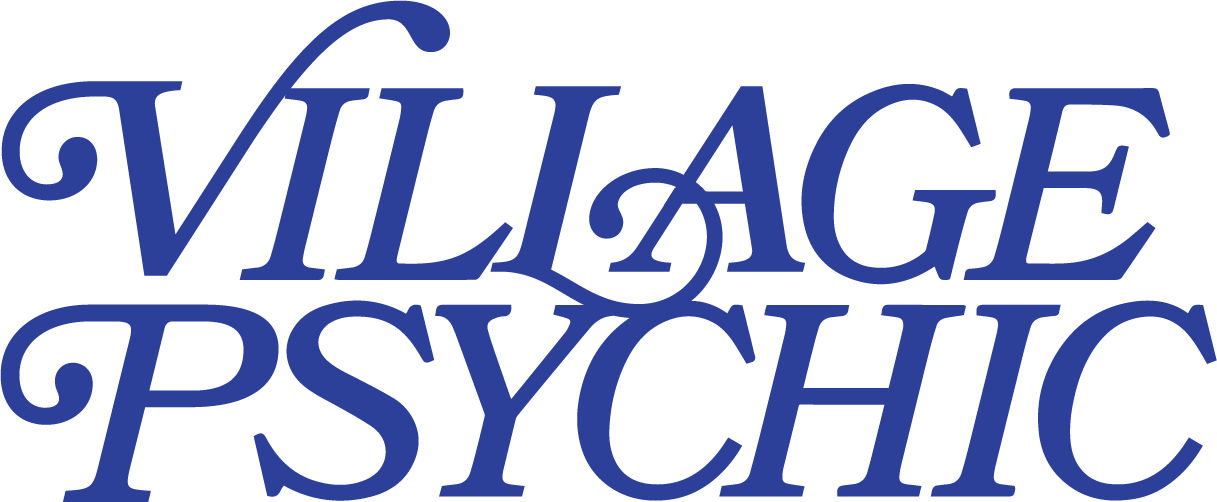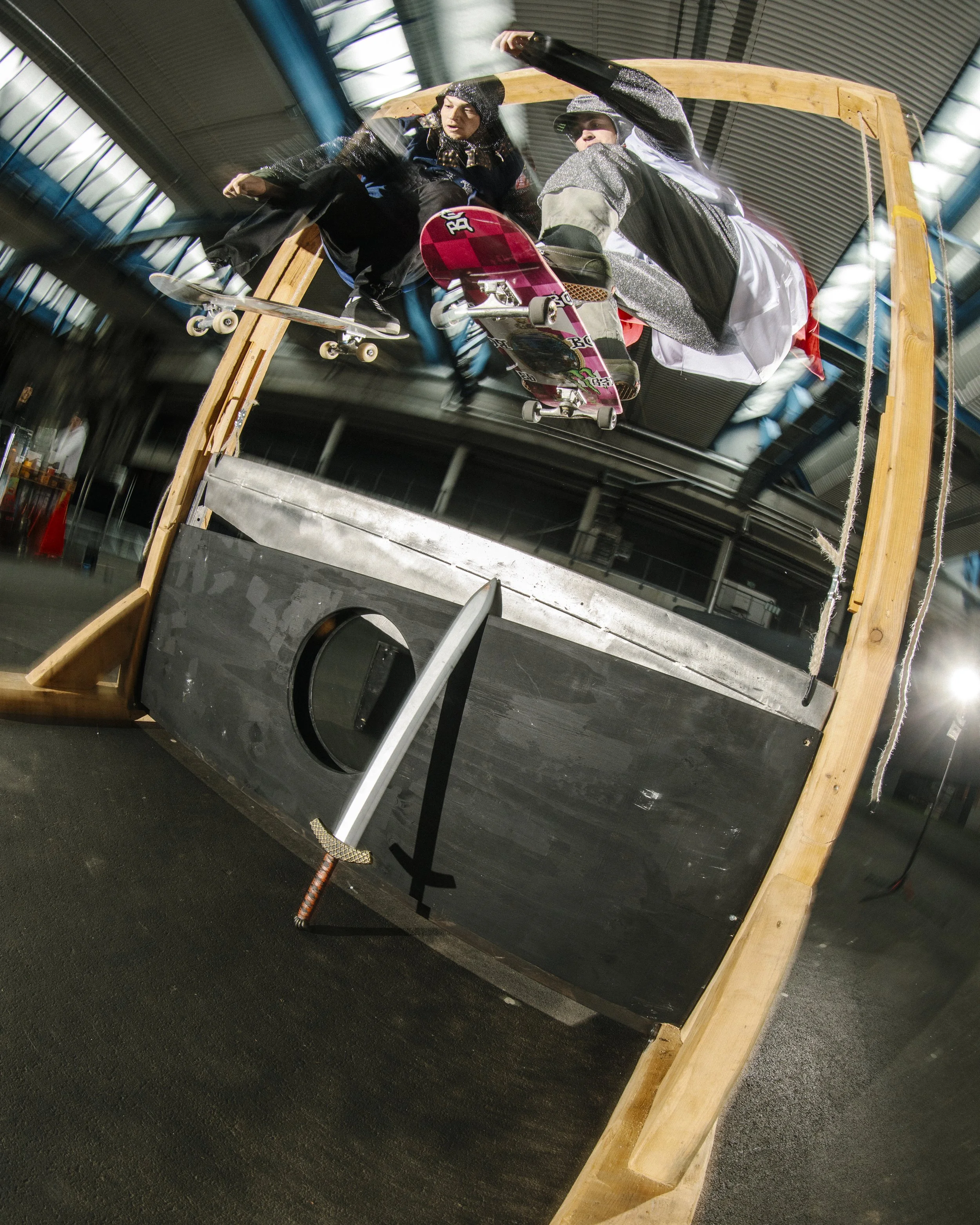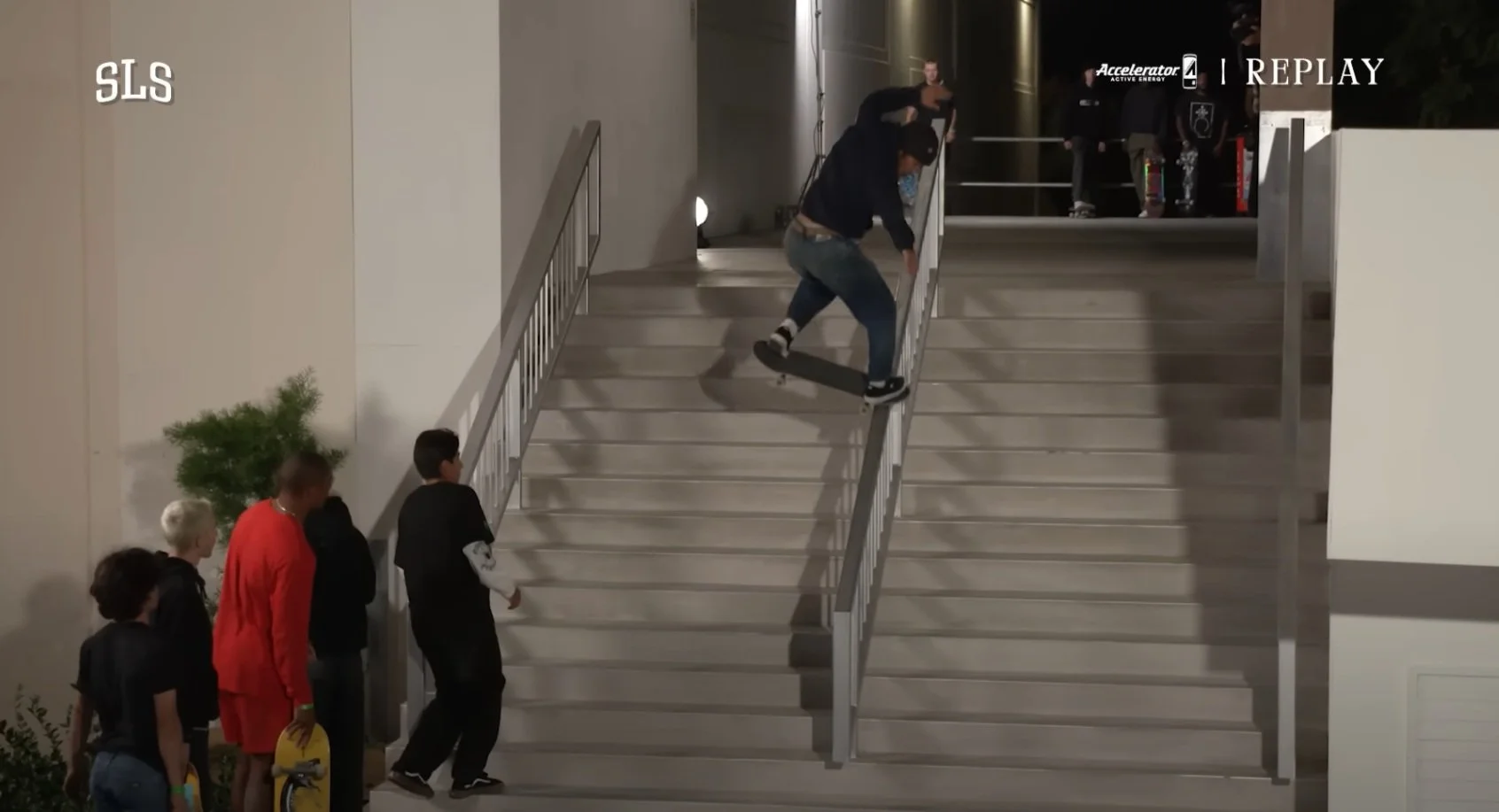Guillotines and LARPing: Silly vs Serious Skateable Architecture
Words by Daryl Mersom
Peeped Through a Medieval Mist
Deep below the snowy 13th-century Seefeld Castle lies a skateable guillotine. On being struck, the blade makes a heavy metallic sound. More than once a local peasant is almost beheaded when somebody misses their pop. As the blade rises, presenting an opportunity for hippy jumps and thread-the-needle ollies, the crowd becomes agitated. Are we about to witness a medieval public execution through our sensitive contemporary eyes? The decapitation would steam in these November temperatures. If it wasn’t for DMX blaring out, “With the non-stop, pop-pop of stainless steel,” we might truly have been in the forests fearing another Mongol invasion of Europe.
The modular guillotine at DIYX STRT JAM is a type of skateable architecture, no matter how unserious and cartoonish it may seem. Yet a cursory Google search brings up what is typically understood by the term: images of white concrete curves and smooth wooden waves, all in a neutral colour palette. Where is the silly side of skateable architecture to be found? In the recesses of an Austrian castle?
Something can be silly but also impressive, respectable, awe-inspiring, gnarly, intelligent, playful, and terrifying.
Alex Ullmann, who built the obstacle, describes the peril of the situation at the foot of the Austrian slopes: “The knife was just held with a couple of screws […] one screw is able to hold 50kg.” Silly is not necessarily pejorative. It is, for want of a better word, the comic, cartoonish, fun, and caricatured end of skateable architecture.Could the guillotine have been made even more perilous? “Of course it could,” says Alex, “but at an official event you can’t do that.”
Looking to the Past
Away from the castle slopes, at a typical skatepark, you will find hubbas and bowls. We are so used to them that we rarely think twice about where they come from, though contrasting their origins is enlightening.
Alvar Aalto, the Finnish Modernist architect, created the first inadvertently skateable pool at his Villa Mairea in 1939. This kidney design was then replicated by friend of Aalto and landscape architect Thomas Church in California, after which there was an explosion of backyard pool skating. Skateboarding’s origins in Modernism are pretty bloody cool.
As for hubbas, how many middle-class mothers hear their polite children speaking of nosesliding the local skatepark hubba and intuit its primordial meaning? In short, at a typical skatepark you will have obstacles inspired by Finnish Modernist design, and simulations of spots where people would smoke crack. An unexpected clash of cultures, perhaps.
“As soon as you zoom out a bit looking at the actual forms, why they are there, where they come from, it gets interesting,” Rich Holland, architectural designer at Floda 31, says. “There is no thought in most skateparks, other than one of the designers is thinking of flow in some form, usually from a position of bias based on their own skill set.”
“I like to go all in: organic in form, or abstract brutalist architecture. The organic is a nod to nature, the origins of skateboarding, and the more free-flowing, moving, flying, carving side of skateboarding; the brutalist is the more technical, hard-edged, modern, and urban side of things.”
But what about the recent forays into branded objects? Where do they fit in with our taxonomy of skate objects? Three case studies come to mind.
At Street League in Sydney Boost Mobile (the mobile phone service provider) sponsored a kicker to orange down-ledge in the shape of their inadvertently very skate-friendly logo. At the Dime Glory Challenge the problem of moving modular obstacles was subcontracted out to the minions, a now recognisable part of the brand. Lastly, SLS Resurrection goes one step further, making former street spots skateable and where, in a sense, iconic skate spots are rebranded.
None of this is intended as criticism of the events, or the obstacles, but rather, to signpost yet another branch of skateable architecture.
Looking to the Future
What’s the inevitable next step after guillotines with moving parts? Fully moveable obstacles that make skateboarding events feel like interactive, Inspector Gadget-style board games.
“They are an untapped area,” says Rich. “We pitched a hydraulic obstacle once years back; it could be operated by phone and you could tilt it, raise and lower it, see who set the object that way.”
“Together with students we created an idea for the gamification of a downhill run so depending on how gnarly you rode, the end obstacle adjusted accordingly.” Imagine skating a course that adapted to your skill level, or got harder as your special meter charged up after each landed trick. On reflection, there is no need for skateparks to be as static as they are. The terrain shifts for surfers, snowboarders, and mountain bikers, so why not for skateboarders too?
The other possible consequence of themed obstacles such as the guillotine is that skaters begin to LARP. From medieval knight costumes to minion outfits, this new style of skating engenders bold new actors, ready to don an outfit. But the less said about LARPing the better. The snow-topped 13th-century Seefeld Castle has a second use throughout the year, when the skateboarders have gone home, after which it is known locally as KINK Castle ♥ BDSM & Fetisch-Party.
I wonder if the guillotine stays for that?








